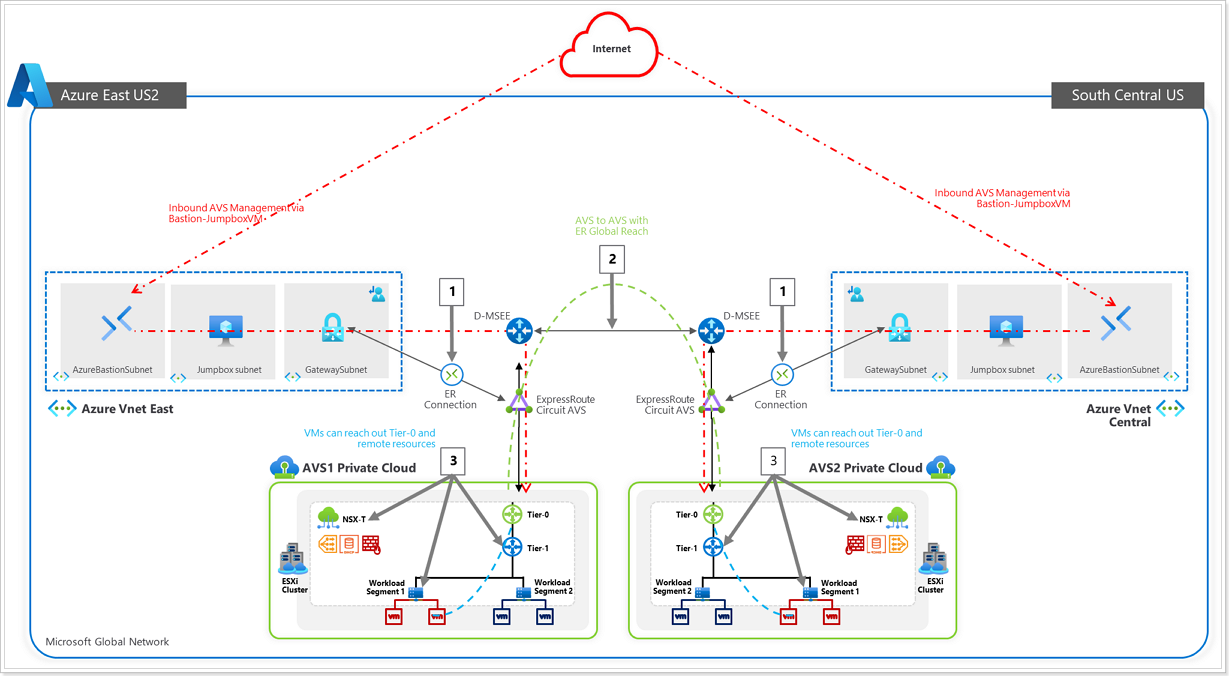Module 1 Task 1
Task 1 - AVS Connectivity Options
Azure VMware Solution offers a private cloud environment accessible from On-Premises and Azure-based resources. Services such as Azure ExpressRoute, VPN connections, or Azure Virtual WAN deliver the connectivity.
Customer needs to have connectivity between their workloads in AVS, existing services and workloads in Azure, and access to the internet.

This hands-on lab will show you how to configure the Networking components of an Azure VMware Solution for:
The lab environment has a preconfigured Azure VMware Solution environment with an Express Route circuit. A nested or embedded VMware environment is configured to simulate an On-Premises environment (PLEASE DO NOT TOUCH).
Both environments are accessible through JumpBox VM that you can deploy in Azure. You can RDP to Jumpbox through a preconfigured Azure Bastion service.
After this lab is complete, you will have built out this scenario below:
Task 1 - AVS Connectivity Options
Task 2: Configure NSX-T to establish connectivity within AVS
Create Test VMs and connect to Segment
Task 4: Advanced NSX-T Features within AVS
Was this page helpful?
Glad to hear it! Please tell us how we can improve.
Sorry to hear that. Please tell us how we can improve.